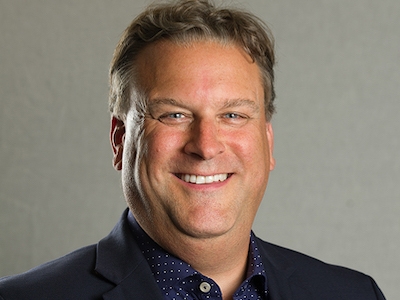 By Malcolm D. Burrows. (Download text-only PDF of this article)
By Malcolm D. Burrows. (Download text-only PDF of this article)
Years ago, I read a copy of Get Smarter: Life and Business Lessons, Seymour Schulich’s freewheeling and eccentric “mentoring book.” Schulich is one of Canada’s great philanthropists, a man who has given away more than $200 million to charity, and has university faculties named for him across the country. He has a gloriously mischievous approach to life and philanthropy. Even though he has chosen to support traditional causes (universities and education), he has done so in an iconoclastic fashion.
Take endowments, the backbone of educational fundraising. These permanent investment funds, where the capital is kept intact while only income is paid out annually, have become the measure of prestige, health and muscle for big educational institutions. Endowments represent continuity, stability and the accumulated wealth of generations. They are a prime source of bragging rights – a basic element of any college or university with pretensions.
These sacred cows are the height of folly

Seymour Schulich
Schulich’s take is that universities in the US and Canada have acquired the counterproductive habit of building up huge endowments. They take a dollar from the donor and dole out five cents annually. Now, there is no business in the world that runs on this type of formula. Just imagine asking a hard-nosed entrepreneur to put up $20 when only a dollar of capital spending is needed.
Universities go one better; they set up committees that cut endowment payments in years where universities’ incompetence produces no returns. In effect, universities say to their donors, “Look, we screwed up, so the money you put up to create scholarships for students is now in escrow until we can straighten out the mess the incompetence of our chosen money managers has created.”
The foolishness of the endowment fund is magnified by the rule that says, “90% of your money’s purchasing power is eroded every thirty years.” Endowment funds look great superficially but are pools of declining purchasing power. And you know what? Schulich has a point. (And his book was published in 2007, a year before Harvard and University of Toronto each lost more than 30% of their endowments in the market meltdown of 2008.)
Is the pile of dough more important than the mission?
Let me expand a bit on Schulich’s points:
- Endowments use capital inefficiently. Most endowments pay out 4%, which means 96% is not being used to advance the mission. The vast majority of the resources are not used for charitable purposes. One could argue a charity may possess the funds it needs, but the funds are locked in a savings account for perpetuity. This is a point that has been repeatedly stressed by the social finance movement, which has advocated utilizing endowments to advance social purposes.
-

Photo by Mufid Majnun, Unsplash
Especially when times are tough, endowment managers and policies are biased towards the preservation of capital over the advancement of mission. Institutions with large endowments become burdened by history and responsibility. They are profoundly risk-averse. Due to law, policy and culture, the capital in an endowment is often treated with greater sanctity than the charitable mission. Yes, trustees have an obligation to be even-handed in balancing the interest of current and future beneficiaries, but sometimes it seems like the pile of dough is more important than what can be done with it.
- Despite the mystique that surrounds the notion of “perpetual” endowments, history is littered with endowments (and trust funds) that erode over time due to a combination of inflation, market volatility and imperfect management. The erosion is not entirely a question of investment managers failing to do their jobs well, although it is a factor. The underlying issue is that the purchasing power of money erodes over time, although the historically robust markets since the 1980s have obscured this fact.
Perpetuity is a mirage
Schulich is one of those dream donors who makes nightmarish demands that challenge the norms of institutional charity fundraising. He writes: “All my benefactions stipulate 7 to 10 per cent payouts, regardless of any capital impairment. Mr. University, you have a fundraising department. Get them off their asses to make up for any shortfalls you create in my capital account.”
In other words, Schulich likes the idea of a limited-term annuity that uses money efficiently over time. Spend on mission within a generation and spend well, with conviction and savvy. Do not create trust fund institutions that cling to the idea of permanence, stability and absence of need.
 This perspective has a rich intellectual and legal tradition. “Mortmain” is a medieval English term that means “dead hand” and describes the prohibition on holding real estate in perpetuity. The concern was that important public resources would become non-productive if held by a large institution like the church. Indeed, mortmain legislation has been part of the common law of charities right up to the present time. It was only in 2010 that Ontario abolished a mortmain provision that prevented charities from owning real estate not directly connected with their charitable purpose.
This perspective has a rich intellectual and legal tradition. “Mortmain” is a medieval English term that means “dead hand” and describes the prohibition on holding real estate in perpetuity. The concern was that important public resources would become non-productive if held by a large institution like the church. Indeed, mortmain legislation has been part of the common law of charities right up to the present time. It was only in 2010 that Ontario abolished a mortmain provision that prevented charities from owning real estate not directly connected with their charitable purpose.
Then again, we need mirages
The anti-endowment perspective overlooks why charities, particularly well-established institutional entities, foster endowments. Charities with significant annual costs need stability for long-term planning. Salaries and other commitments need to be paid. It would be irresponsible to take on obligations that could not be met due to a poor fundraising year. Charities are also better at spending money than raising it – they are not businesses, nor should they be.
Another factor is the source of funding for endowments. Most endowments have been primarily funded by bequests. While Schulich may rail against endowments, he also states that he gives, in part, “to create a legacy that assures I won’t be forgotten.” This desire for a form of immortality easily translates into endowments for many donors. Life savings and values intertwine to become the life savings and values of the charity: it’s a heady combination. Even Schulich cannot resist.
The charity version of the lottery fantasy
One of the bracing things about Schulich is he has the urgency of an entrepreneur and the rationalism of an investor. He is a first-generation wealth creator. He seems to find trust fund brats – either individuals or institutional – to be repugnant. Large, institutional charities are not very entrepreneurial. Most leaders in this setting cling to the idea of security and have no clue about how to attract new wealth to fund their enterprises when the old wealth is spent.
Over the years, I have worked with academics and charity administrators who want to build an endowment large enough to fund their current operating needs. Why? So they do not have to fundraise. It is the charity version of the lottery fantasy. Schulich’s implication is correct: vital, relevant organizations will always be finding new bucks.
Schulich issues a warning: My advice to donors and potential benefactors is: fight to keep as much of your money as possible out of endowment funds. It is hard to avoid the tremendous mythology that envelops the university endowment fund. The efficiency with which your donation operates will be increased by the amount you can divert from these unproductive capital parasites.
The mythology of endowments
Endowments do indeed have a mythology attached to them, a mythology that we in the fund-development and gift-planning world sell to donors. (I have spent a good part of my career promoting and believing in the importance of endowments, so I am implicated.) Endowments are powerful finance tools, and they are also emotional legacy structures due to their perpetual nature. Endowments have been promoted extensively in the last 30 years in Canada. I would even say that the Canadian charitable sector only really discovered endowments in the last 25 years. As I noted in one of my articles, “The End of Endowments?”, for a structure that dates from the Middle Ages, endowments are a remarkably new phenomenon in this country.
Another aspect of the endowment mythology is the prestige factor. In the academic world, all ambitious faculty members want to have their own endowed chair. You would think this is because the chair will provide much greater resources for them to do their work, but the reverse is often true. The chairs just pay salary, which the chair holder is already receiving. The chair endowment may provide a modest annual sum for research, but it is relatively minor compared to what a top researcher can attract in grants. The real appeal for most academics is status within their institution and the larger academic world.
I welcome Seymour Schulich’s iconoclasm and vocal skepticism. Endowments are an important funding mechanism within the charitable sector, but we have gone through a period where we have built up the mythology of endowments without adequate critical reflection. There are other models of funding, such as Schulich’s high-payout funds, which are technically known as quasi-endowments. Capital can also be invested in enterprises that produce both monetary as well as mission return. Can we make better use of our charitable capital? It is a question we should constantly be asking.
Malcolm Burrows is a philanthropic advisor with 30 years of experience. He is head of philanthropic advisory services at Scotia Wealth Management and founder of Aqueduct Foundation. Views are his own. Burrows is on Twitter and LinkedIn.
Reprinted with permission from Gift Planning in Canada 16 (2), 2011.
Tuesday, January 19, 2021 in Forever is a long time
Share: Twitter, Facebook



